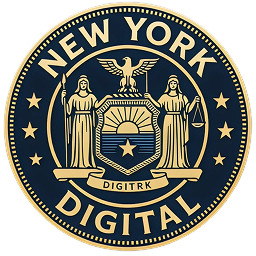A Design Code
Remember When Buildings Used to Burn Down All the Time?
In 1900, faulty wiring was killing people. Lots of people. Buildings burned down regularly because everyone had their own creative interpretation of how electricity should work. Then we invented the National Electrical Code. Suddenly, your house not burning down became the default expectation, not a lucky accident.
Fast forward to 2025: We're living through the exact same crisis, except this time it's digital. And yes, it's killing people.
The Body Count We Don't Talk About
Teen suicide rates correlating with social media adoption. Car accidents from notification addiction. Mental health crises from algorithmic manipulation. Deaths of despair linked to digital isolation. Dark patterns aren't just annoying. They're lethal.
That infinite scroll? It's not an accident. That notification at 3am? Carefully calculated. That "are you sure you want to quit?" popup? Designed by someone who studied casino psychology. We regulated cigarettes for less.
What Would a Digital Building Code Look Like?
Imagine if every website and app had to meet basic safety standards, just like buildings. Clear logout buttons with no hunting through menus. Actual data deletion, not just "deactivation." One-click unsubscribe that actually works. Time-spent warnings after 2 hours. Mandatory cool-down periods for high-stakes actions. Age-appropriate design requirements.
No dark patterns like hidden costs or forced continuity. Transparent algorithms where you know why you're seeing what you're seeing. Accessibility by default, because discrimination is a safety issue. These aren't radical ideas—they're basic consumer protections applied to digital environments.
The Precedent Already Exists
We didn't wait for the free market to stop electrocuting people. We created standards. We trained inspectors. We made it illegal to wire a house with whatever you found in the garage. The National Electrical Code wasn't anti-innovation. It made innovation safer. It turned electricity from a dangerous luxury into boring, reliable infrastructure.
That's exactly what we need for digital design. The same builders who complained about early electrical codes later bragged about their safety certifications. Standards don't kill innovation—they channel it toward solutions that don't kill people.
The Standards Would Be Simple
Just like electrical code boils down to "don't start fires," digital design code would focus on basics. Don't manipulate by exploiting psychological vulnerabilities. Don't trap users with easy entry but difficult exit. Don't discriminate by making systems accessible and fair by default. Don't deceive through interfaces where what you see is what you get. Don't exhaust by respecting human cognitive limits.
These principles aren't complex. They're common sense applied to digital environments that currently operate without meaningful oversight or accountability.
Who Dies If We Don't Act?
The teenager who can't escape the validation loop. The elderly person tricked by deceptive patterns. The parent who loses their savings to manipulative game mechanics their kid accessed. We're not talking about hypothetical harm. We're talking about your nephew who can't put down his phone. Your mom who fell for a dark pattern subscription. Your friend whose mental health cratered after an algorithm decided to show them exactly the wrong content at exactly the wrong time.
This Isn't Anti-Tech. It's Pro-Human.
Nobody wants to go back to dangerous electrical systems. Building codes didn't stop innovation—they channeled it toward safety. A National Design Code wouldn't stifle creativity. It would redirect it toward building things that don't hurt people.
The technology industry likes to position safety regulation as innovation-killing bureaucracy. But the electrical code analogy reveals this argument's fundamental dishonesty. Electrical standards didn't prevent the development of computers, smartphones, or renewable energy. They prevented houses from burning down while innovation continued.
The Time Is Now
Every day we wait, another teen stares at their phone until 4am. Another elderly person loses money to a deceptive interface. Another family fractures over algorithmic radicalization. We have the precedent. We have the technology. We have the moral obligation.
What we need is the political will to say: Enough people have died. Time for a code.
"Waiting for the industry to self-regulate is like waiting for 1900s builders to stop burning down houses on their own. It didn't work then. It won't work now."
New York Digital is working to draft model legislation for a National Design Code. Because the alternative is accepting that digital harm is the price of innovation. We rejected that logic for electrical systems, automotive safety, and food standards. It's time to reject it for digital design too.
Retry
Claude can make mistakes.
Please double-check responses.
